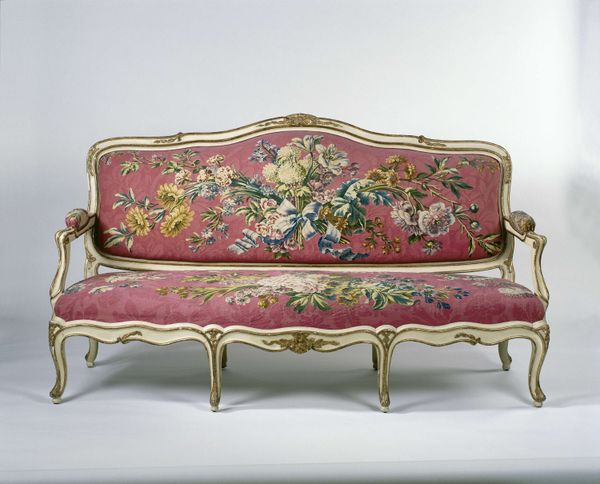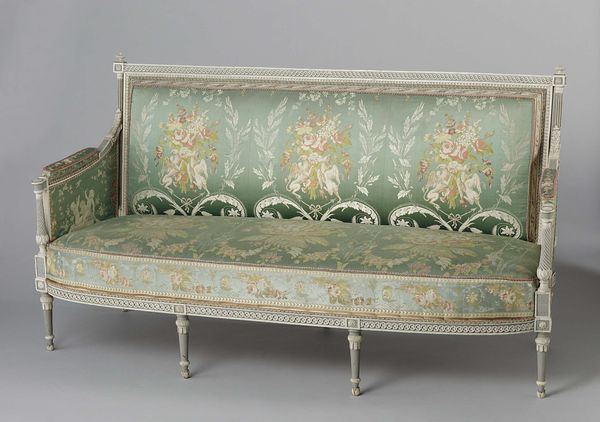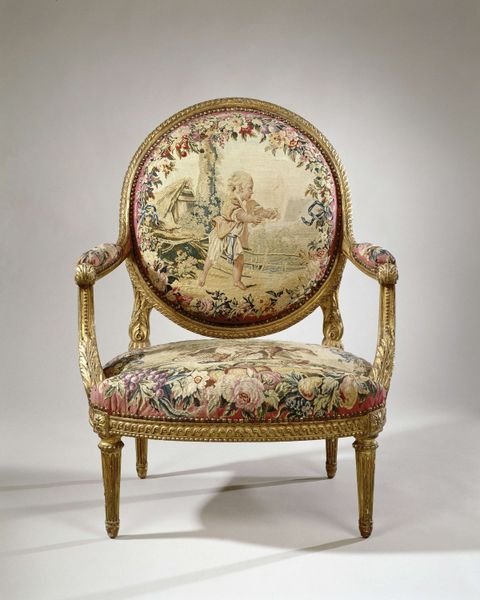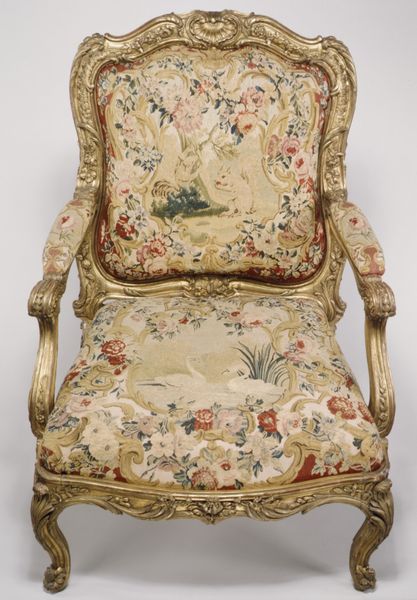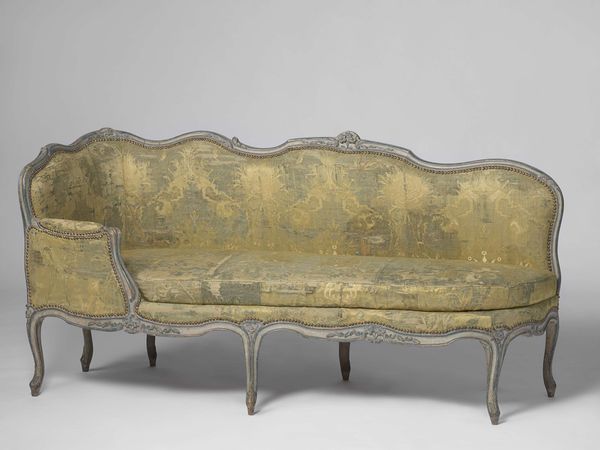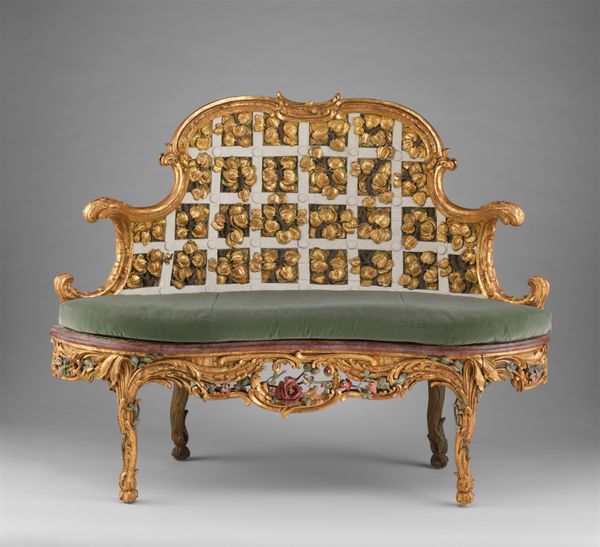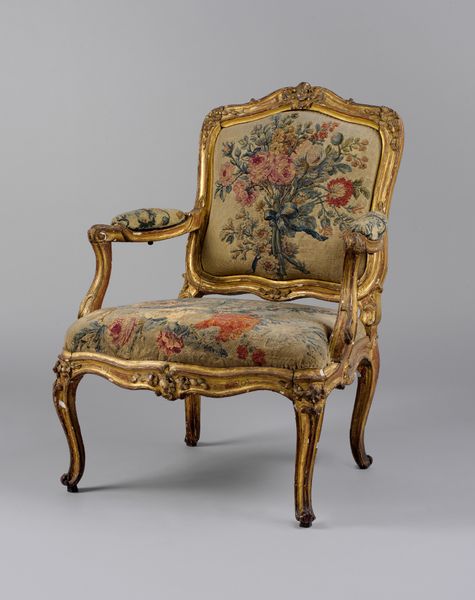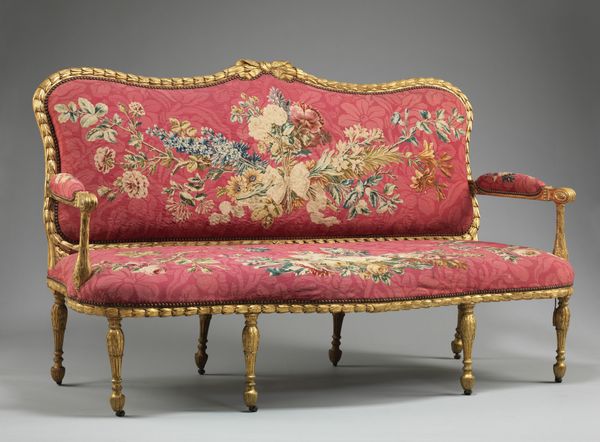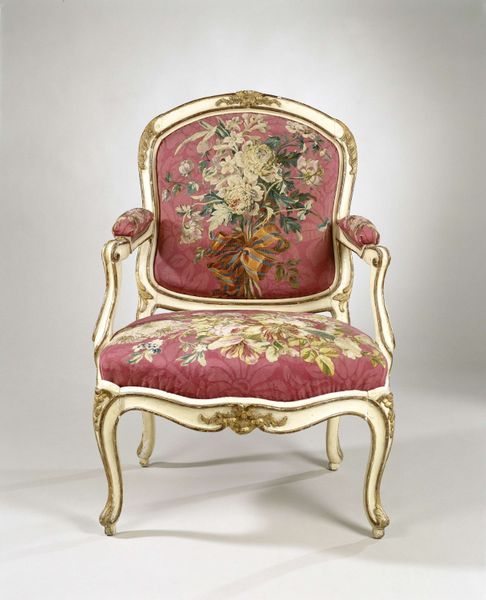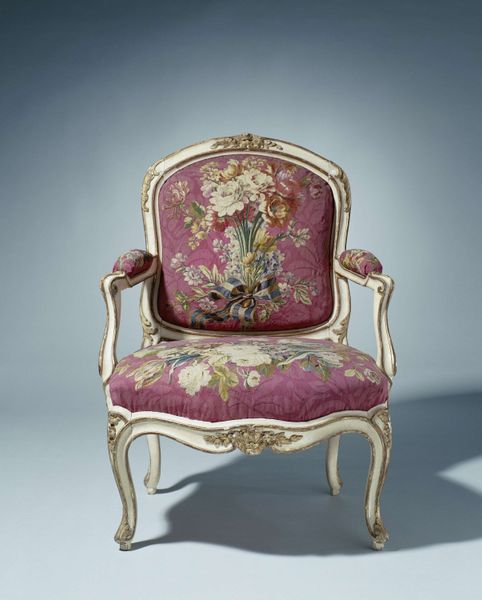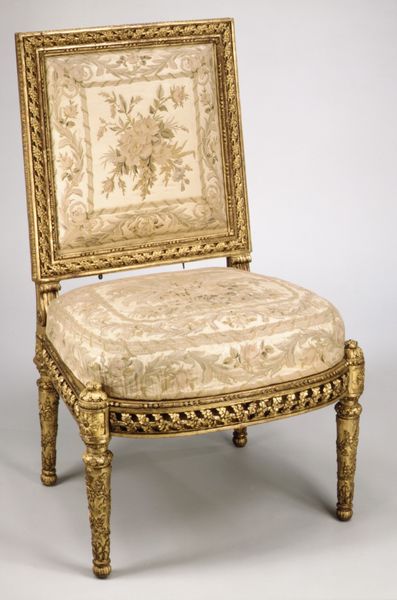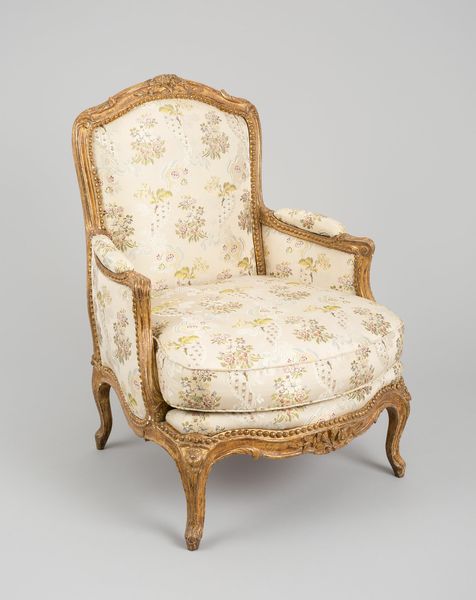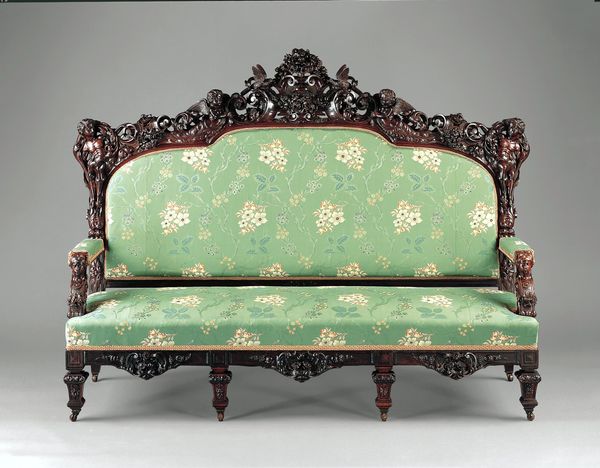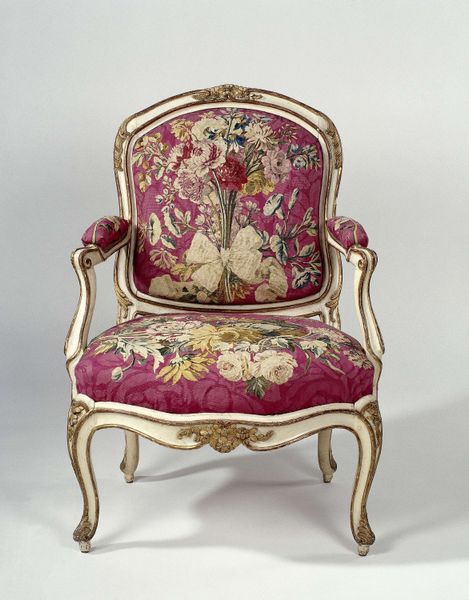
carving, weaving, textile, sculpture, wood
#
carving
#
weaving
#
furniture
#
landscape
#
textile
#
figuration
#
traditional architecture
#
stoneware
#
sculpture
#
wood
#
decorative-art
#
decorative art
#
rococo
Dimensions: 44 x 92 1/2 x 32 in. (111.8 x 235 x 81.3 cm)
Copyright: Public Domain
This settee was crafted by Nicolas-Quinibert Foliot, sometime in the 18th century. The first impression is an overwhelming sense of rococo opulence, a swirl of gilded wood and tapestry. The eye is immediately drawn to the tapestry which presents a scene teeming with birds and foliage, framed by curvilinear forms that dictate the settee's very structure. The gilt frame, far from being mere support, actively participates in the visual narrative. Its intricate carvings echo the tapestry's themes, blurring the distinction between frame and art. The settee challenges conventional ideas around form and function. Its design emphasizes aesthetics over practicality. We can consider its semiotic function: a cultural code that communicates status, luxury, and a detachment from the utilitarian. The tapestry and the gilded frame work together to create a cohesive visual experience that reflects the values and tastes of the French court. It stands as a testament to the decorative arts and their power to embody complex cultural meanings through form and materiality.
Comments
No comments
Be the first to comment and join the conversation on the ultimate creative platform.
